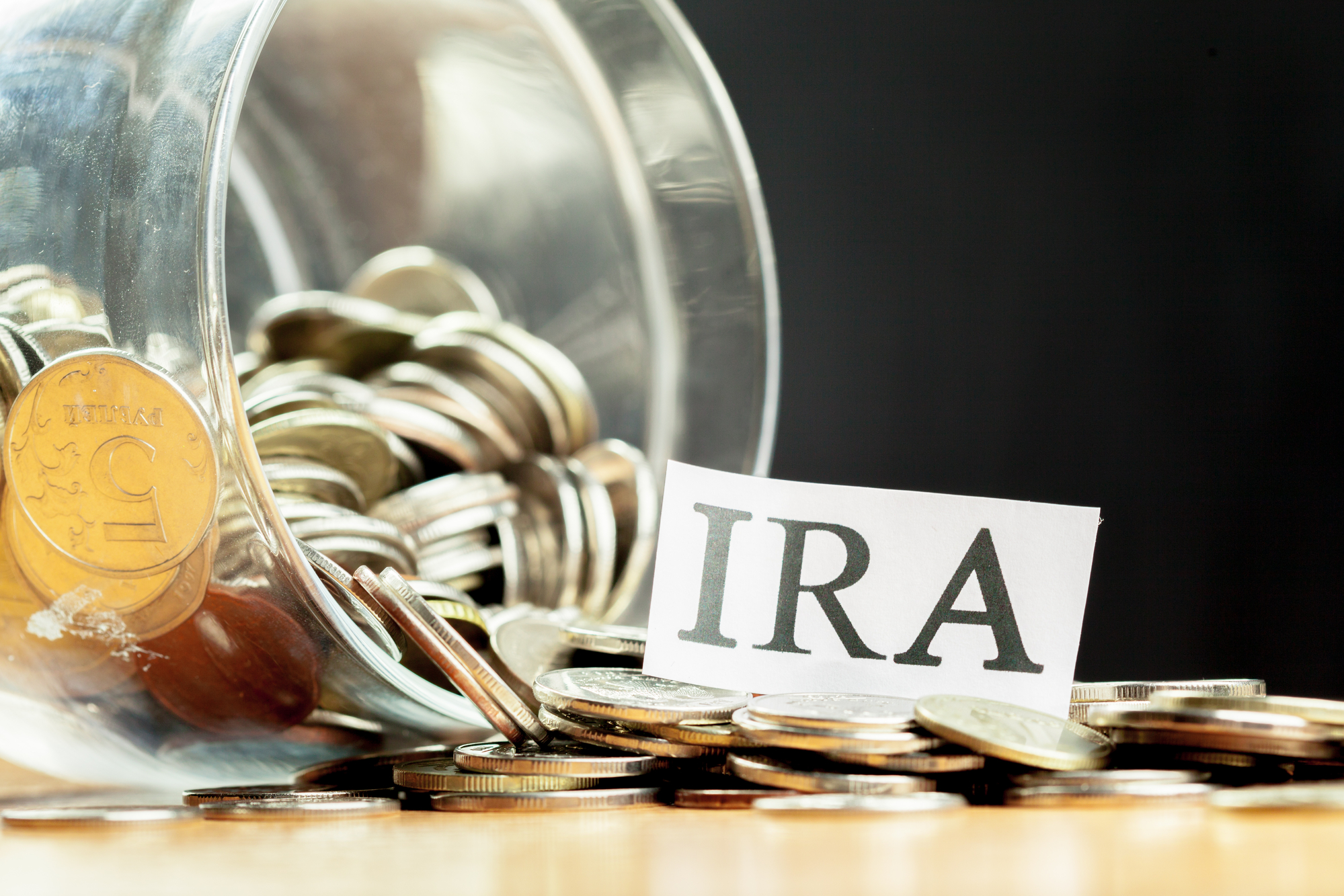
As you begin thinking about estate planning, it is important to consider how you will choose to distribute assets that aren’t often thought of as part of your estate. Your IRA may be a bit “out of sight, out of mind,” especially if it was initiated by your employer. However, you have likely already filled out a beneficiary designation form, and it is probably about time to revisit it.
What is an IRA account?
Your IRA account is a tax-deferred retirement account, meaning that you do not have to pay taxes on the income that you save for your retirement. You will, however, have to pay income taxes on those funds as they are distributed to you throughout your retirement. Typically, mandatory minimum distributions from an IRA begin at the age of 70.5 years (this is referred to as the “required beginning date”). Once you reach your required beginning date, you will have to withdraw at least a minimum distribution each year. This minimum amount is calculated using the year-end value of the account divided by your life expectancy divisor, as designated in the IRS Uniform Lifetime Table. The older you get, the larger your minimum distributions become.
What happens to my IRA account when I die?
If you do not use all of the money in your IRA before you die, the remaining assets can be passed to a named beneficiary. Because you have spent your working life contributing to this special tax-deferred retirement account, the IRS allows that tax benefit to continue on for your heirs, as long as you designate a beneficiary properly. Improperly designating a beneficiary can trigger a much faster distribution of all remaining assets in the account, which may cause a hefty tax burden for your loved ones.
Beneficiaries of an IRA account can be your spouse, your children, your grandchildren or other individuals, a trust, a charity, or a combination of these. However, which beneficiaries you choose and in which combinations will have different impacts on how funds will be distributed over time.
How do I make sure that I have appropriately designated a beneficiary?
If you already have an IRA account and have filled out a beneficiary designation form, you will first want to request a copy from the financial institution and review it. You should revisit this designation form periodically, especially after major life events such as marriage, divorce, and death. If you don’t fill out a beneficiary form attached to an IRA account, or if you fill it out improperly, the distribution will revert to the arrangements in the custodial agreement, which may not create your intended result.
Beneficiary forms control, so anyone you listed on that form will be the beneficiary, regardless of what you write in your will or in any trust instructions. Make sure to include both primary and contingent beneficiaries in case any of your beneficiaries die or decide not to accept the distributions. Beneficiaries cannot be changed after your death.
An attorney can draft a custom beneficiary designation, which gives you more options than the standard beneficiary form. However, it is important to know that using a custom form may delay the transfer of assets to beneficiaries because the financial institution will need to interpret the document, rather than working off of their own boilerplate form.
Whether you use the standard form or create a custom designation, it is important to have an attorney review your designation. The IRS has a number of restrictions and tax penalties associated with transferring IRA accounts, and an attorney can let you know how your designation decisions will impact your heirs.
Once you have reviewed your beneficiary designation documents, make sure that you keep copies in a safe place where loved ones will be able to find them. Don’t assume that the financial institution will be able to provide the form. Keep your own records and make sure your heirs know where to find them.
How do my IRA account assets get distributed to my heirs?
When you name an individual as a beneficiary to your IRA account, the account will pass to them without going through probate. Once a beneficiary becomes the owner of your IRA account, he or she will have two choices: cash out the account and pay income taxes on the total value of the account, or “stretch-out” the benefits over their own lifetime. If the beneficiary is your spouse, there is also a third option. Spouses may choose to “roll over” your IRA account into their own.
If you properly designate a beneficiary, whether a spouse or another individual, they can choose to “stretch-out” the benefits of an IRA for their own lifetimes. The way this works is that, when they inherit your IRA account, the required minimum distributions become calculated based on the oldest beneficiary’s lifespan under the IRS table. For example, if you designate your adult child as the sole beneficiary of your IRA account and he or she chooses to stretch-out the benefits, they will begin receiving minimum distributions based on their own age and life expectancy. If, however, your designate more than one person as the beneficiary of your IRA, all beneficiaries’ distributions will be calculated based on the oldest person’s life expectancy. To maximize the account’s time to grow and to minimize tax burdens on the account, it is best to designate a young person as the beneficiary for an IRA. If you do wish to designate more than one beneficiary, another option is the split the IRA into multiple accounts and name one beneficiary per account. This allows the distributions to be made based on the age of each beneficiary individually.
The benefit to “stretching-out” an IRA account is that the funds can continue to grow in the retirement account and will be distributed slowly over time. For your heirs, this will also allow them only to pay income taxes on the amounts received each year. If all of the funds are released at once, as a beneficiary may choose to do, there will be a much greater tax burden to the beneficiary.
There are a few reasons why you might not want to name individuals as beneficiaries to your IRA. One is that, once the account has been transferred to the beneficiary, they own it and they can exercise ownership rights over it. This includes naming their own beneficiaries, as well as cashing out the entire account. Once the account is in the name of your beneficiary, it is also vulnerable to the beneficiary’s creditors. If the beneficiary ever becomes incapacitated, there is a risk of court interference. If any of these are concerns for you, there is also the possibility of designating a trust or a charity as the beneficiary of your IRA account.
If you name your own estate as the beneficiary of your IRA account, or if you fail to designate a beneficiary under certain custodial agreements, the assets that remain in your account will be liquidated into your estate. This will trigger income taxes on the total value of the account, and will subject these assets to the probate process. This makes those assets vulnerable to creditors and would delay distributions to your beneficiaries until the probate process is complete.
Can I name a trust as the beneficiary for my IRA account?
You can name a trust as a beneficiary for an IRA account. This would give you total control over what happens with the assets once you pass. A trust becomes irrevocable upon your death, meaning that whatever you designate cannot be altered.
There are a number of circumstances which might make a trust the preferred beneficiary of an IRA account. These can include if you wish to provide for minor children, if you are concerned that your spouse may not name your children as beneficiaries, or if you want to protect the funds from your heirs’ creditors or poor spending habits. Decide whether control matters to you. The language of a trust can stipulate how the assets should be used and how often funds will be distributed.
If you are going to name a trust as the beneficiary of an IRA account, it will have to be done carefully with an attorney because it can be done incorrectly. An incorrect beneficiary designation can revert to the default in the account agreement or result in unfavorable tax penalties. If a trust does not qualify as a designate beneficiary, it will have a life expectancy of zero, and the assets will be required to be distributed in as little as five years. A qualified beneficiary trust will need to conform to IRS regulations. Work with an attorney. A conduit IRA trust on an Irrevocable Retirement Benefit Trust may be a better fit for distributing an IRA account than a standard living revocable trust.
While you are alive, distributions from an IRA account are made based on your life expectancy. After you die and the benefits pass to your trust, if properly set up, the distributions are made based on the life expectancy of the oldest beneficiary of the trust.
One downside of using a trust is that it can be costly to administer and trusts often pay a higher income tax than individuals. In reality, many IRA accounts are not that large. When making the determination with an attorney whether to designate a trust or an individual as a beneficiary, make sure that the size of the account is part of the calculation.
Can I name my minor children as beneficiaries of my IRA account?
If you plan to name a minor as a beneficiary of your IRA account, you will need to be sure that your will specifies a guardian who will be responsible for managing the minor’s inheritance until he or she is old enough to inherit. Another option is to leave the IRA account to a trust and make minor children the beneficiaries of that trust.
How can I donate the remaining assets in my IRA account to a charity?
There are some great benefits to naming a charity as the beneficiary of an IRA account, but there are also some concerns to look out for. If you name a charity as the sole beneficiary of your IRA account, the funds will be released to the charitable organization without the assets being included in your estate (this will matter if you have an estate large enough to trigger estate taxes) and without the charity paying income taxes on the value of the account. Contact the charity you wish to name and find out if they have any instructions regarding naming it as a beneficiary.
Pitfalls arise if you want to leave your IRA account to individuals and a charity as co-beneficiaries. Because a charity has no life expectancy, the IRS calculates a life expectancy of zero, and the charity will be considered the oldest beneficiary to the account. As a result, the funds will be distributed in as little as five years from the death of the account holder. While this will not have a negative impact on the charity, it may cause a serious tax-burden to the other beneficiaries, and it would limit the long-term growth potential of the account.
Instead, if you want to give your heirs the option of receiving distributions or allowing the funds to benefit a charity, you can name the charity as an alternate. This gives your primary beneficiaries the option to claim the inheritance themselves or to disclaim their inheritance in favor of the charity.
You can learn more about how a trust might benefit you and your family by calling us to schedule an EPIC Protection Planning Session, where we can identify the best strategies for you and your family. Call today at 770-933-9009 or reach out via our online contact form.

